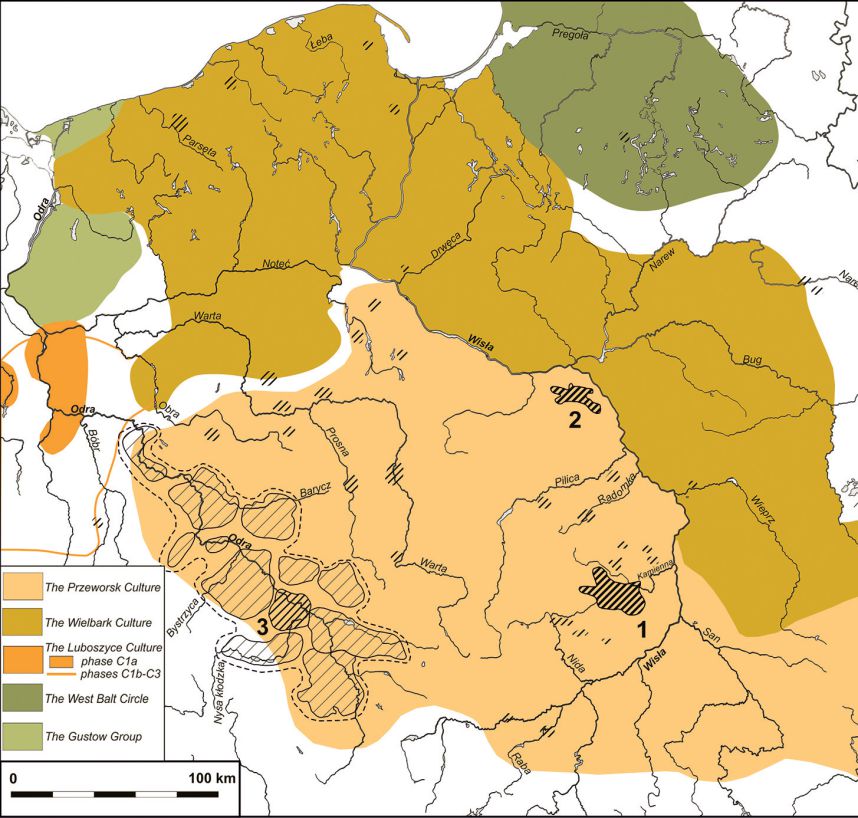Socio-economic determinants of iron production on Polish lands during antiquity
The phenomenon of metallurgical smelting centres of the Przeworsk culture
DOI:
https://doi.org/10.35686/AR.2018.20Keywords:
ancient metallurgy, Przeworsk culture, metallurgical centres, social structuresAbstract
Metallurgical activity of the peoples living in the area known as Germania Magna is characterized by an extensive and ad hoc nature which clearly is different from the centralized Roman production model. In the so-called Barbarian parts of Europe however, there were regions where there was a specialized and identifiably large mass production of iron. On Polish lands three such centres were active – in the Holy Cross Mountains, in West Masovia and in some regions of Silesia. The presence within a single cultural unit of several large metallurgical centres functioning on the basis of different organizational patterns is a unique phenomenon and warrants reflection upon the causes of their creation and the meaning of production for their neighbouring areas. These enormous logistical projects indicate the existence of yet unknown to us interdependent social structures of large work teams in the population, evident over a period of several generations. Their reconstruction can help us understand at least some aspects of the social and economic life on Polish lands towards the end of antiquity.
Downloads












